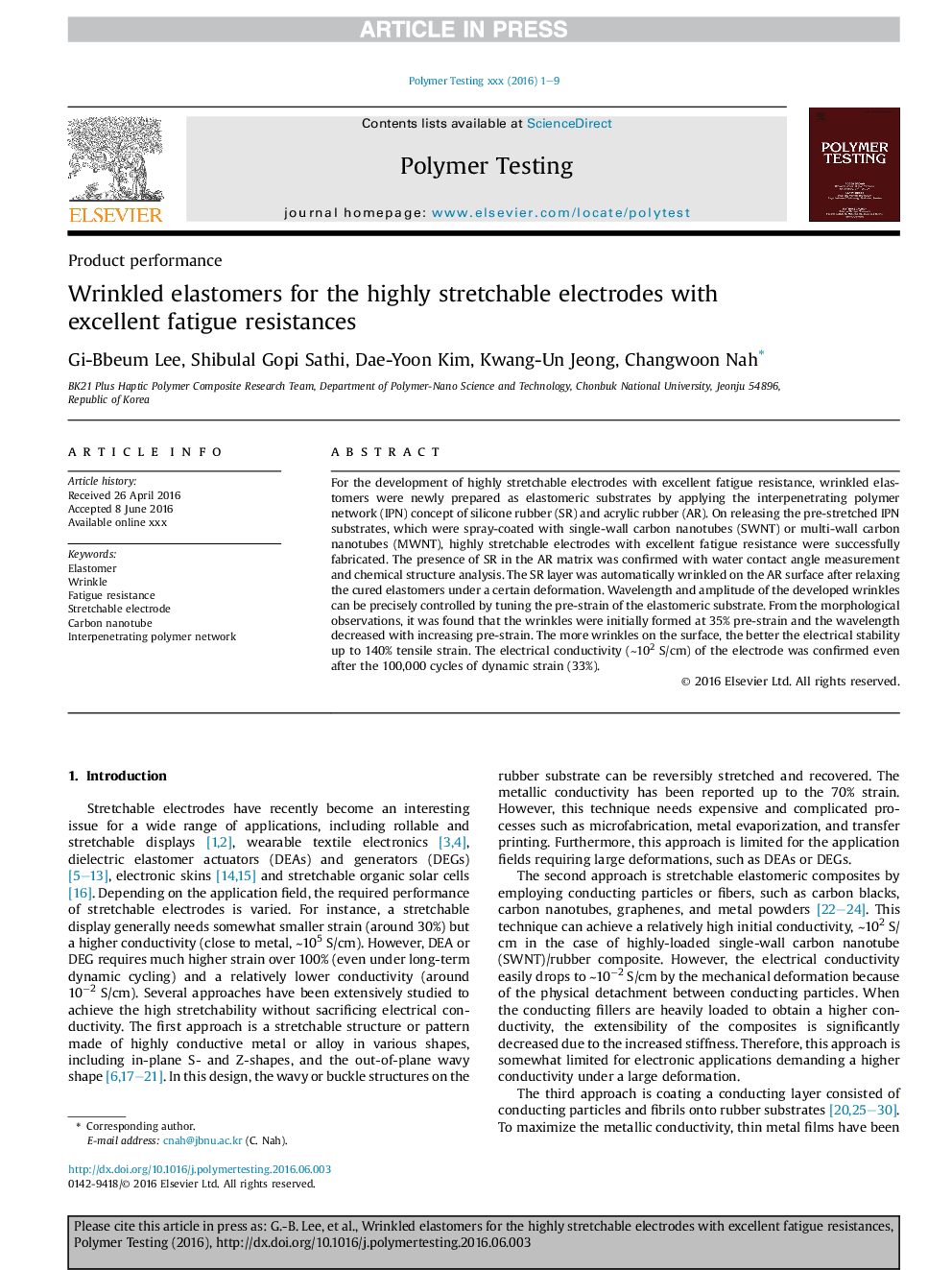| Article ID | Journal | Published Year | Pages | File Type |
|---|---|---|---|---|
| 5205743 | Polymer Testing | 2016 | 9 Pages |
Abstract
For the development of highly stretchable electrodes with excellent fatigue resistance, wrinkled elastomers were newly prepared as elastomeric substrates by applying the interpenetrating polymer network (IPN) concept of silicone rubber (SR) and acrylic rubber (AR). On releasing the pre-stretched IPN substrates, which were spray-coated with single-wall carbon nanotubes (SWNT) or multi-wall carbon nanotubes (MWNT), highly stretchable electrodes with excellent fatigue resistance were successfully fabricated. The presence of SR in the AR matrix was confirmed with water contact angle measurement and chemical structure analysis. The SR layer was automatically wrinkled on the AR surface after relaxing the cured elastomers under a certain deformation. Wavelength and amplitude of the developed wrinkles can be precisely controlled by tuning the pre-strain of the elastomeric substrate. From the morphological observations, it was found that the wrinkles were initially formed at 35% pre-strain and the wavelength decreased with increasing pre-strain. The more wrinkles on the surface, the better the electrical stability up to 140% tensile strain. The electrical conductivity (â¼102Â S/cm) of the electrode was confirmed even after the 100,000 cycles of dynamic strain (33%).
Keywords
Related Topics
Physical Sciences and Engineering
Chemistry
Organic Chemistry
Authors
Gi-Bbeum Lee, Shibulal Gopi Sathi, Dae-Yoon Kim, Kwang-Un Jeong, Changwoon Nah,
